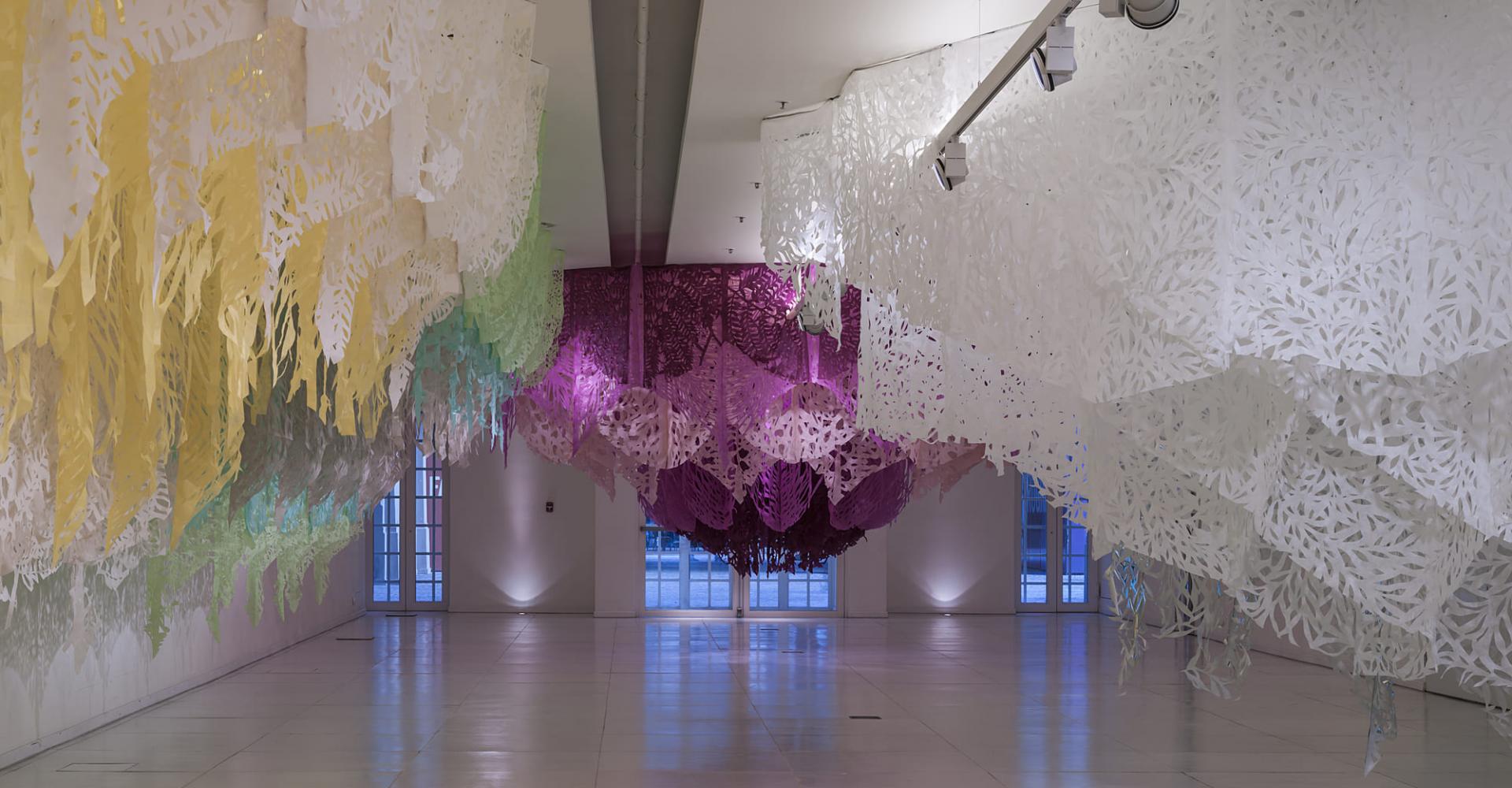Curator: Ximena Caminos
Paraísos desplegables (Pop-Up Paradises) is a 640sq.m. site-specific installation by Manuel Ameztoy commissioned by the Faena Art. Designed specifically for Faena Art Center cathedral exhibition hall, the work consisted of hand-cut openwork textiles on a monumental scale. An artist known for his work with ephemera, Ameztoy conjured a fairytale landscape that was as delicate as it was detailed. The exhibition included a video of the same installation in the marshes of the Entre Ríos province, which was its original source of inspiration. According to art critic Ana María Abattistozzi, “Paper has become central once again, not only as support, but as the material of an image that is constructed with scissors.”
First I get ready. I put on work clothes: boots and thick socks, cap with visor and leather gloves. As Ester, who hands me the machete she taught me how to use, says, I cover “every last bit of skin.” She is the one who showed me that I should always hit the base of the stalk with short blows, ideally where it sprouts up from the ground. Never swing at loose fluttering branches, since it can bounce back like the lash of a whip and take out your eye. She also warned me against the vipers, which must be avoided or killed “in the name of Jesus.”In my left fist, then, the machete. In the right, I grasp the stone that I have in my pocket. I progress slowly amidst the thistle. Thanks to their long thorns, it is easy to see where one shrub begins and the other ends. But you have to be careful not to run into with the “black vines”, which are hidden amidst the others under the tree tops. Their hard stalks are like wires with hooks that come in and out of the ground in a row. They go right through your clothes and catch on your flesh. I approach the rise, circling around it on the path opened by animals and streams, until I come to the spot where the trail crosses that first layer of thorns: this is it, this is where I take root.I’m now inside. I can tell because I must hunch over to move on, looking down due to the undergrowth above. I see ferns, ivy, moss, lichen, fungus and palm tree as I go by.
Every so often, there are larger hardwood trees and jaca- randas. I hurry as I head downward, but I am held up by the tangle of climbers that I push back as I advance. I am getting close. I see the crack in the earth. I know that it will grow into a ravine, a gulley and that by the time I reach the Paraná River it will be much too wide for me to jump over.
I take the leap. I am now down below. The rise collapses into this clayey bed. Everything that has overflowed in the summer, everything that has gone over the edge and drained away with storm waters ends up here. Enor- mous trees that have fallen under their own weight take root down here; they will grow tall again until they rot and head downstream. The thickness of the rise, the fields, the wire fences, the homes and the chicken coops also feed this fertile slime.
Down here, amidst rotting wood and roots digging into the ground, is a spring. I lean over the water and reach out my hand, the one holding the stone I have been ca- ressing in my pocket. I drop the stone into nature’s well; it makes no waves, no concentric circles as it vanishes into the still water. In my memory, though, a crest rises up like a doom and stays there between water and sky, between the two muddy sides of the ravine.
Something blinds me. A slice of the midday sun that reaches even the back of the ravine and hits me in the face. I hear the dogs calling me in for lunch. Ester must have set the table by now.
–MANUEL AMEZTOY
Faena Art Center Buenos Aires
Aimé Painé 1169, Faena Buenos Aires, Argentina
